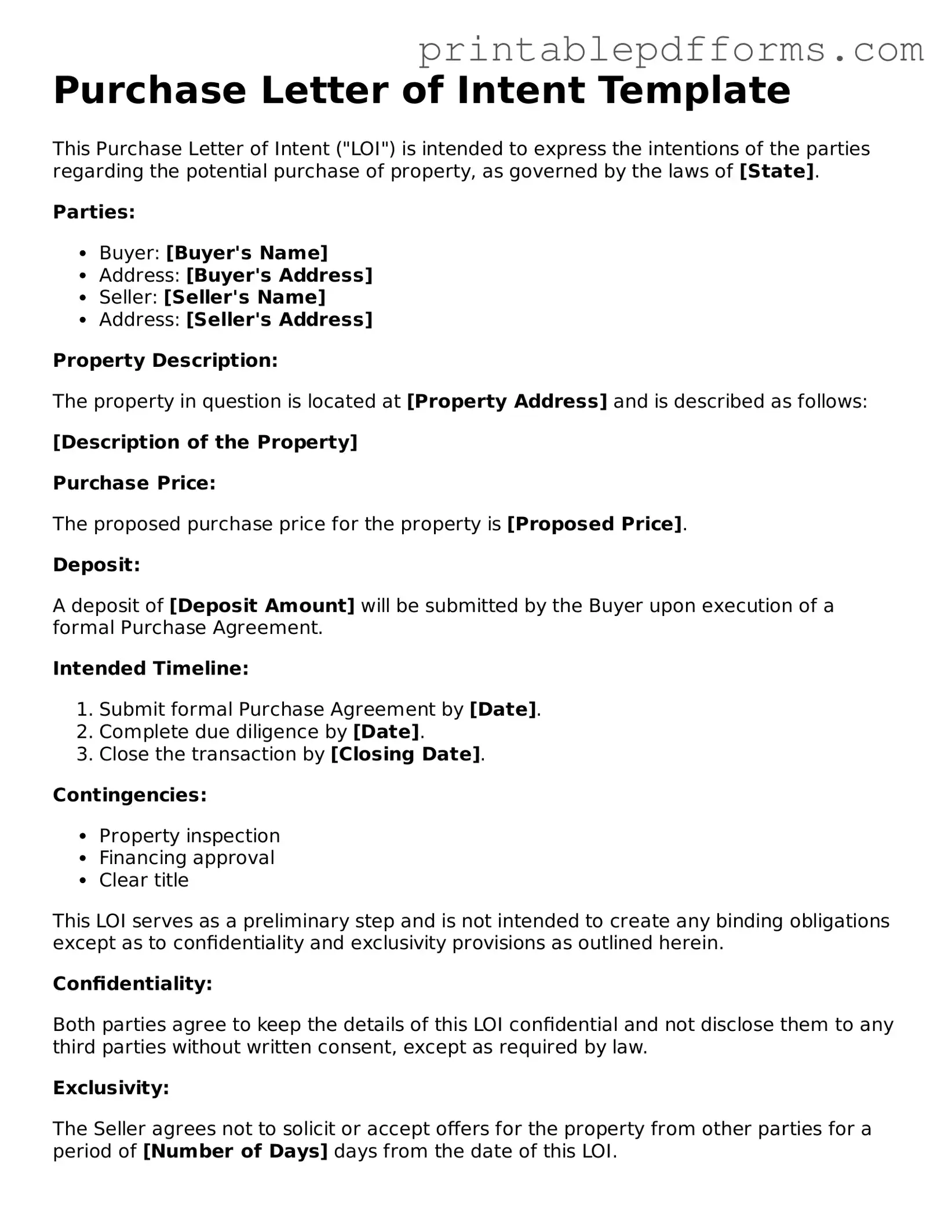Purchase Letter of Intent Template
This Purchase Letter of Intent ("LOI") is intended to express the intentions of the parties regarding the potential purchase of property, as governed by the laws of [State].
Parties:
- Buyer: [Buyer's Name]
- Address: [Buyer's Address]
- Seller: [Seller's Name]
- Address: [Seller's Address]
Property Description:
The property in question is located at [Property Address] and is described as follows:
[Description of the Property]
Purchase Price:
The proposed purchase price for the property is [Proposed Price].
Deposit:
A deposit of [Deposit Amount] will be submitted by the Buyer upon execution of a formal Purchase Agreement.
Intended Timeline:
- Submit formal Purchase Agreement by [Date].
- Complete due diligence by [Date].
- Close the transaction by [Closing Date].
Contingencies:
- Property inspection
- Financing approval
- Clear title
This LOI serves as a preliminary step and is not intended to create any binding obligations except as to confidentiality and exclusivity provisions as outlined herein.
Confidentiality:
Both parties agree to keep the details of this LOI confidential and not disclose them to any third parties without written consent, except as required by law.
Exclusivity:
The Seller agrees not to solicit or accept offers for the property from other parties for a period of [Number of Days] days from the date of this LOI.
By signing below, the parties acknowledge their intention to proceed with the negotiation of a formal Purchase Agreement.
Signatures:
__________________________
[Buyer's Name]
Date: ________________
__________________________
[Seller's Name]
Date: ________________
